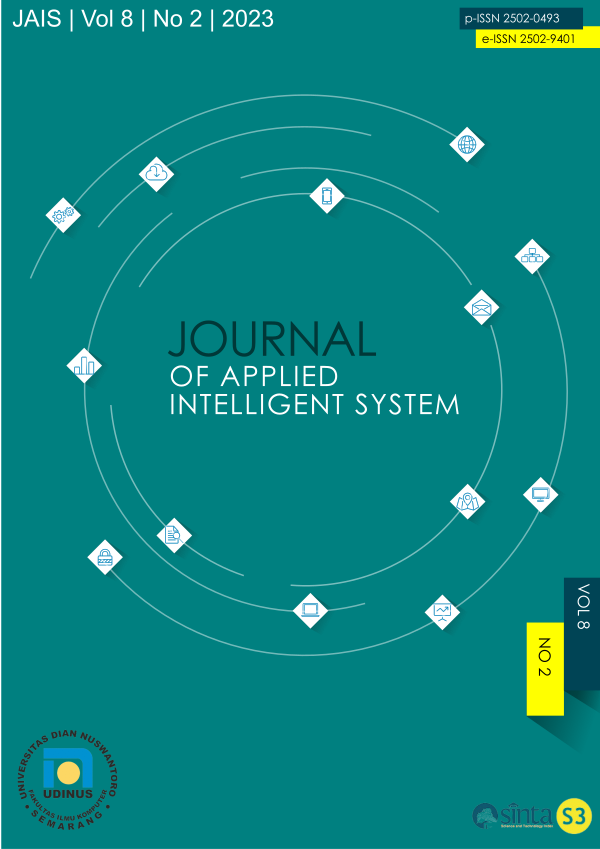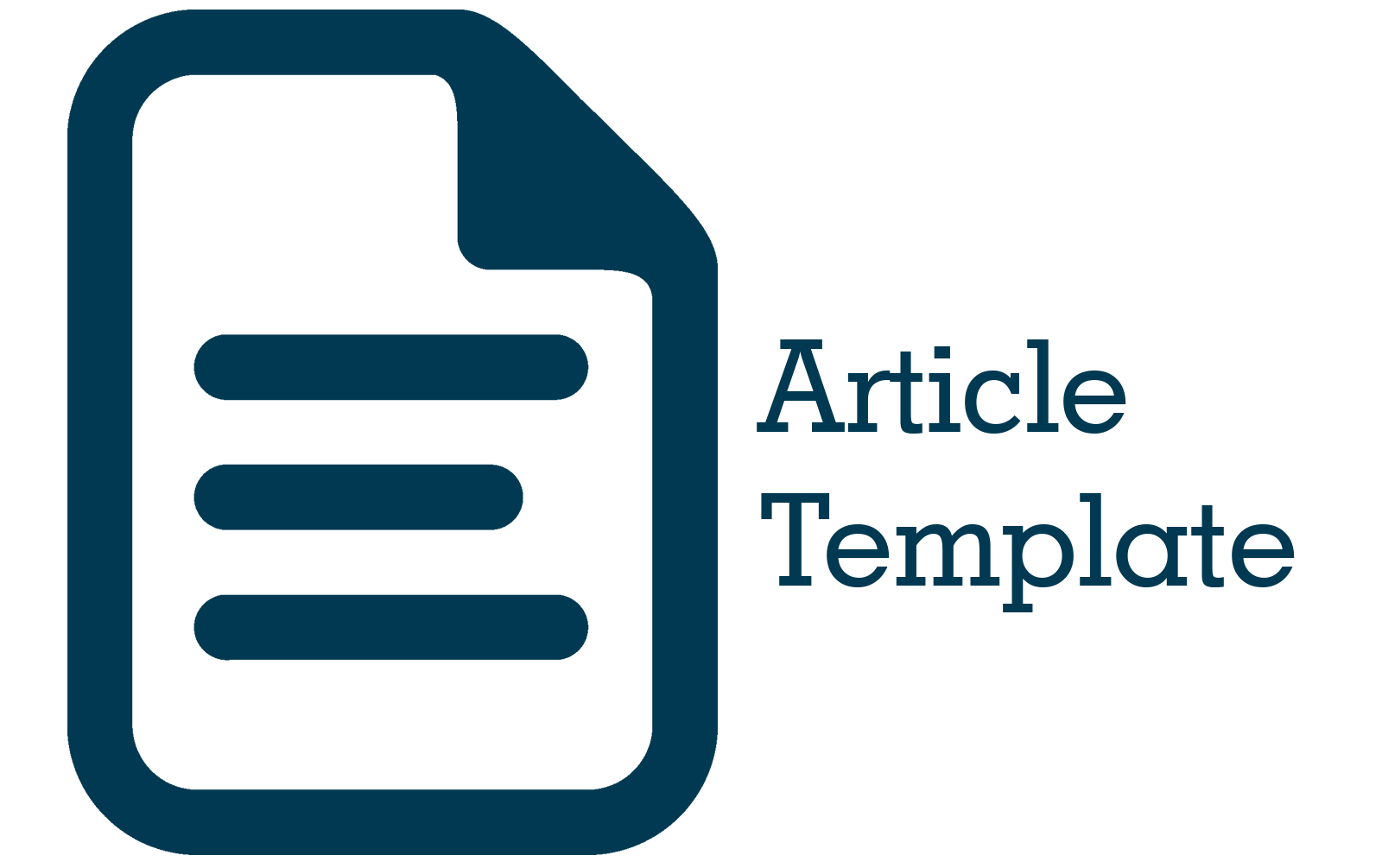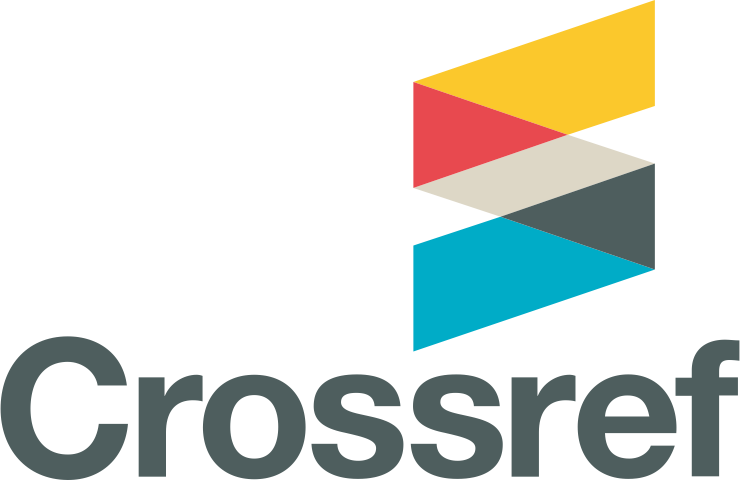Learning Vector Quantization for Robusta and Arabica Coffee Classification
DOI:
https://doi.org/10.33633/jais.v8i2.7343Abstract
ANN or artificial neural network is a way to solve various kinds of problems to make decisions based on training. One of the methods of JSt which contains competitive and supervised learning. Where this layer will automatically learn the classification of the closest input distances and will be distributed to the same class. there are 2 types of coffee beans that are famous in the world, namely arabica and robusta, for some people or the layman it will be very difficult to distinguish these 2 types of coffee beans apart from the fact that the shape is almost the same the color looks almost the same but there are a number of differences in the two coffee beans which we can see from the shape of the seed. Robusta has a shape that tends to be round and smaller in size, and has a rougher texture. Arabica, on the other hand, is slightly flatter and longer in shape. The size is slightly bigger than Robusta but the texture of Arabica is smoother than Robusta. This is the basis of this study where the images of the two coffee beans will be extracted using the first-order texture feature extraction method based on MU parameters, standard deviation, skewness, energy, entropy, and smoothness. The method for collecting data was in the form of a quantitative method using images from each coffee bean, both Arabica and Robusta, with a total of 130 images. The comparison between training_data and test_data is 80:20. Through research conducted in the form of performance parameters with the best accuracy, including: Learning rate 0.01, max epoch or maximum iteration of 10 and 30%, the amount of training data used is 39 training images and 26 test images resulting in an accuracy presentation of 71% for the training process and error with a percentage of 96% for the test process.References
A. Bode, “K-Nearest Neighbor Dengan Feature Selection Menggunakan Backward Elimination Untuk Prediksi Harga Komoditi Kopi Arabika,” Ilk. J. Ilm., vol. 9, no. 2, p. 188, 2017.
M. A. Rizal, “Klasifikasi Mutu Biji Kopi Menggunakan Metode K – Nearest Neighbor Berdasarkan Warna Dan Tekstur,” Univ. Teknol. Yogyakarta, vol. 1, no. 1, pp. 1–8, 2019.
P. S. Maria and E. Susianti, “Performance Test Sistem Kualifikasi Biji Kopi Menggunakan Pengolahan Citra Metode Local Binary Pattern dan Algoritma Learning Vector Quantization Performance Test Sistem Kualifikasi Biji Kopi Menggunakan Pengolahan Citra Metode Local Binary Pattern dan Al,” J. Sains, Teknol. dan Ind., vol. 14, no. 2, pp. 234–239, 2017.
D. Ikhsan, E. Utami, and F. W. Wibowo, “Metode Klasifikasi Mutu Greenbean Kopi Arabika Lanang Dan Biasa Menggunakan K-Nearest Neighbor Berdasarkan Bentuk,” J. Ilm. SINUS, vol. 18, no. 2, p. 1, 2020.
B. Chu, K. Yu, Y. Zhao, and Y. He, “Development of Noninvasive Classification Methods for Different Roasting Degrees of Coffee Beans Using Hyperspectral Imaging,” Sensors, vol. 18, no. 4, p. 1259, Apr. 2018.
R. Janandi and T. W. Cenggoro, “An Implementation of Convolutional Neural Network for Coffee Beans Quality Classification in a Mobile Information System,” in 2020 International Conference on Information Management and Technology (ICIMTech), 2020, no. August, pp. 218–222.
E. R. Arboleda, “Comparing performances of data mining algorithms for classification of green coffee beans,” Int. J. Eng. Adv. Technol., vol. 8, no. 5, pp. 1563–1567, 2019.
E. R. Arboleda, A. C. Fajardo, and R. P. Medina, “Classification of coffee bean species using image processing, artificial neural network and K nearest neighbors,” in 2018 IEEE International Conference on Innovative Research and Development (ICIRD), 2018, no. May, pp. 1–5.
H. BEYENE, D. N. A. JOSHI, and D. K. KOTECHA, “PLANT DISEASES PREDICTION USING IMAGE PROCESSING AND MACHINE LEARNING TECHNIQUES: SURVEY,” Int. J. Comput. Appl., vol. 1, no. 8, 2018.
E. M. de Oliveira, D. S. Leme, B. H. G. Barbosa, M. P. Rodarte, and R. G. F. A. Pereira, “A computer vision system for coffee beans classification based on computational intelligence techniques,” J. Food Eng., vol. 171, pp. 22–27, Feb. 2016.
M. Gawehn, A. van Dongeren, A. van Rooijen, C. D. Storlazzi, O. M. Cheriton, and A. Reniers, “Identification and classification of very low frequency waves on a coral reef flat,” J. Geophys. Res. Ocean., vol. 121, no. 10, pp. 7560–7574, Oct. 2016.
K. P. Lewis and J. D. Espineli, “Classification And Detection Of Nutritional Deficiencies In Coffee Plants Using Image Processing And Convolutional Neural Network (CNN),” Int. J. Sci. Technol. Res., vol. 9, no. 4, pp. 2076–2081, 2020.
Y. Hendrawan et al., “AlexNet convolutional neural network to classify the types of Indonesian coffee beans,” IOP Conf. Ser. Earth Environ. Sci., vol. 905, no. 1, p. 012059, Nov. 2021.
A. Michael and M. Garonga, “Classification model of ‘Toraja’ arabica coffee fruit ripeness levels using convolution neural network approach,” Ilk. J. Ilm., vol. 13, no. 3, pp. 226–234, 2021.
M. N.s. Akbar, E. Rachmawati, and F. Sthevanie, “Visual Feature and Machine Learning Approach for Arabica Green Coffee Beans Grade Determination,” ACM Int. Conf. Proceeding Ser., pp. 97–104, 2020.
B. Turi, G. Abebe, and G. Goro, “Classification of Ethiopian Coffee Beans Using Imaging Techniques,” East African J. Sci., vol. 7, no. 1, pp. 1–10, 2013.
C. Pinto, J. Furukawa, H. Fukai, and S. Tamura, “Classification of Green coffee bean images basec on defect types using convolutional neural network (CNN),” in 2017 International Conference on Advanced Informatics, Concepts, Theory, and Applications (ICAICTA), 2017, pp. 1–5.
P. Wang, H.-W. Tseng, T.-C. Chen, and C.-H. Hsia, “Deep Convolutional Neural Network for Coffee Bean Inspection,” Sensors Mater., vol. 33, no. 7, p. 2299, Jul. 2021.
Downloads
Published
Issue
Section
License
- Authors retain copyright and grant the journal right of first publication with the work simultaneously licensed under a Creative Commons Attribution License that allows others to share the work with an acknowledgment of the work's authorship and initial publication in this journal.
- Authors are able to enter into separate, additional contractual arrangements for the non-exclusive distribution of the journal's published version of the work (e.g., post it to an institutional repository or publish it in a book), with an acknowledgment of its initial publication in this journal.
- Authors are permitted and encouraged to post their work online (e.g., in institutional repositories or on their website) prior to and during the submission process, as it can lead to productive exchanges, as well as earlier and greater citation of published work (See The Effect of Open Access).









